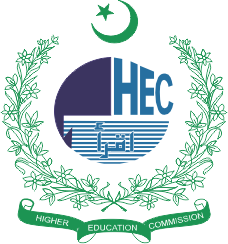Analyzing the Effectiveness of Matric and CAIE Curricula in English Language Learning: A Pakistani Students' Perspective
DOI:
https://doi.org/10.63062/trt/V24.017Keywords:
Matric and CAIE English curriculum Effectiveness, English Language Skills Acquisition, Students’ PerceptionAbstract
An English curriculum is a set of courses, lessons, and learning objectives that are designed to help students acquire the English language by fostering students' English writing, reading, listening, and speaking skills. The article investigates the effectiveness of the Matriculation system and Cambridge Assessment International Education curricula in teaching English language skills to students in Pakistan. The objective of this research is to compare these two educational systems and evaluate which of these two curricula better supports language acquisition and meets the needs of learners. For this purpose, the study recorded a total of 100 responses, which were obtained through random sampling, comprising 50 students enrolled in the Matric curriculum in class 10 at a public school and 50 students enrolled in the CAIE curriculum in 11th Cambridge at a private school in Multan, Pakistan. Data were collected using a questionnaire administered via Google Forms to evaluate the effectiveness of both the Matric and CAIE curricula in developing students' English writing, reading, speaking, and listening skills. The responses were then statistically analyzed by using SPSS. This study reveals that the CAIE curriculum effectively meets students' English language skills needs due to its improved learning environment. Future research should explore methods for implementing learning objectives.
References
Ahmad, S. (2024). O Level vs. Matriculation: Pakistan's Academic Crossroads. ForiEDU.com - Home & Online Tutors; FORIEDU BLOGS. https://blog.foriedu.com/o-levels-vs-matriculation
Asghar, J., & Butt, M. I. (2018). A critique of National Curriculum for English language in Pakistan: Proposing cognitive strategy instruction for ELT. Kashmir Journal of Language Research, 21(1), 75-86. https://kjlr.pk/index.php/kjlr/article/view/196
Azhar, S., Ali, Z., Taj, S., & Habibi, R. M. (2020). Analysis of the National Curriculum 2006 in the Light of Learner Centered Ideology. Journal of Education And Humanities Research (JEHR), University of Balochistan, Quetta, 9(1), 1–12. http://journal.uob.edu.pk/journal/index.php/jehr/article/view/33
Brown, H. D. (2007). Principles of language learning and teaching (5th ed.). Pearson Education.
Brownell, J. (2012). Listening: Attitudes, principles, and skills (5th ed.). Pearson.
Cambridge International. (2022). Cambridge O Level literature in English (2010). Cambridge International. https://www.cambridgeinternational.org/programmes-and-qualifications/cambridge-o-level-literature-in-english-2010/
Christison, M., & Murray, D. E. (2022). What English language teachers need to know: Volume III, Designing curriculum (2nd ed.). Routledge.
Graves, K., & Garton, S. (2017). An analysis of three curriculum approaches to teaching English in public-sector schools. Language Teaching, 50(04), 441–482. https://doi.org/10.1017/s0261444817000155
Goodwyn, A., Reid, L., & Durrant, C. (2014). International perspectives on teaching English in a globalized world. Routledge.
Grabe, W., & Stoller, F. L. (2019). Teaching and researching reading (3rd ed.). Routledge.
Halliday, M. A. K. (1978). Language as Social Semiotic: The Social Interpretation of Language and Meaning. Edward Arnold.
Hyland, K. (2019). Second language writing (2nd ed.). Cambridge University Press.
Kelly, A. V. (2009). The Curriculum: Theory and Practice (6th ed.). SAGE Publications.
Malik, S., Khan, A., & Sadiq, U. (2020). JHSS, 28(1).
Manan, S. A., David, M. K., & Dumanig, F. P. (2015). The English-medium fever in Pakistan: Analyzing policy, perceptions, and practices through an additive bi/multilingual education lens. International Journal of Bilingual Education and Bilingualism, 20(6), 736–752. https://doi.org/10.1080/13670050.2015.1073669
Marsh, C. J., & Willis, G. (2007). Curriculum: Alternative Approaches, Ongoing Issues (4th ed.). Pearson Education, Inc.
Mickan, P. (2019). Language Curriculum Design and Socialisation. Multilingual Matters.
Ornstein, A. C., & Hunkins, F. P. (2018). Curriculum: Foundations, Principles, and Issues (7th ed.). Pearson Education, Inc.
Raza, N. A., & Coombe, C. (2022b). Volume Introduction: English Language Teaching in Pakistan: Theory, Research, and Pedagogy. In English language teaching (pp. 1–10). https://doi.org/10.1007/978-981-16-7826-4_1
Raja, R. F. (2019, September 14). Matric vs O Level: A deeper insight. Young World. Dawn. https://www.dawn.com/news/1505020
Richards, J. C. (2017). Curriculum development in language teaching (2nd ed.). Cambridge University Press.
Shaina-mansoori. (2023, August 8). What to Study in Pakistan? O Level or Matriculation - Step Schools. Step Schools. https://stepschools.com/what-to-study-in-pakistan-o-level-or-matriculation/
Siddiqui, K. A. (2020). Analysis of Pakistan’s National Curriculum for English: A Learner-Centered Ideology Perspective. University of Chitral Journal of Linguistics and Literature, 4(I), 23-30. https://doi.org/10.33195/r3dzw455
Downloads
Published
Issue
Section
License
Copyright (c) 2024 Hafsa Ghias, Palwasha Saeed, Hafiz Muhammad Arif, Dr. Asra Khan

This work is licensed under a Creative Commons Attribution-NonCommercial 4.0 International License.



